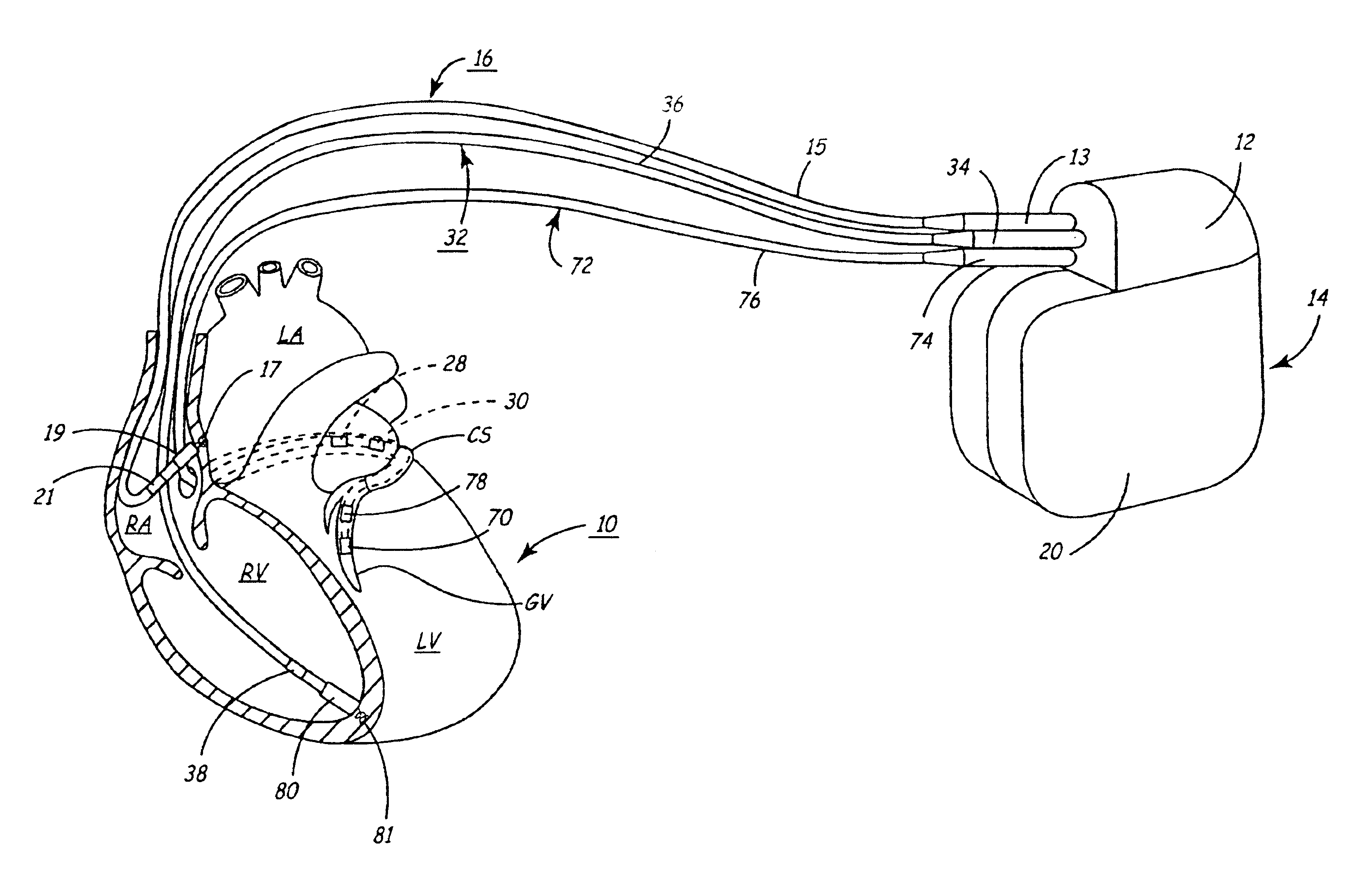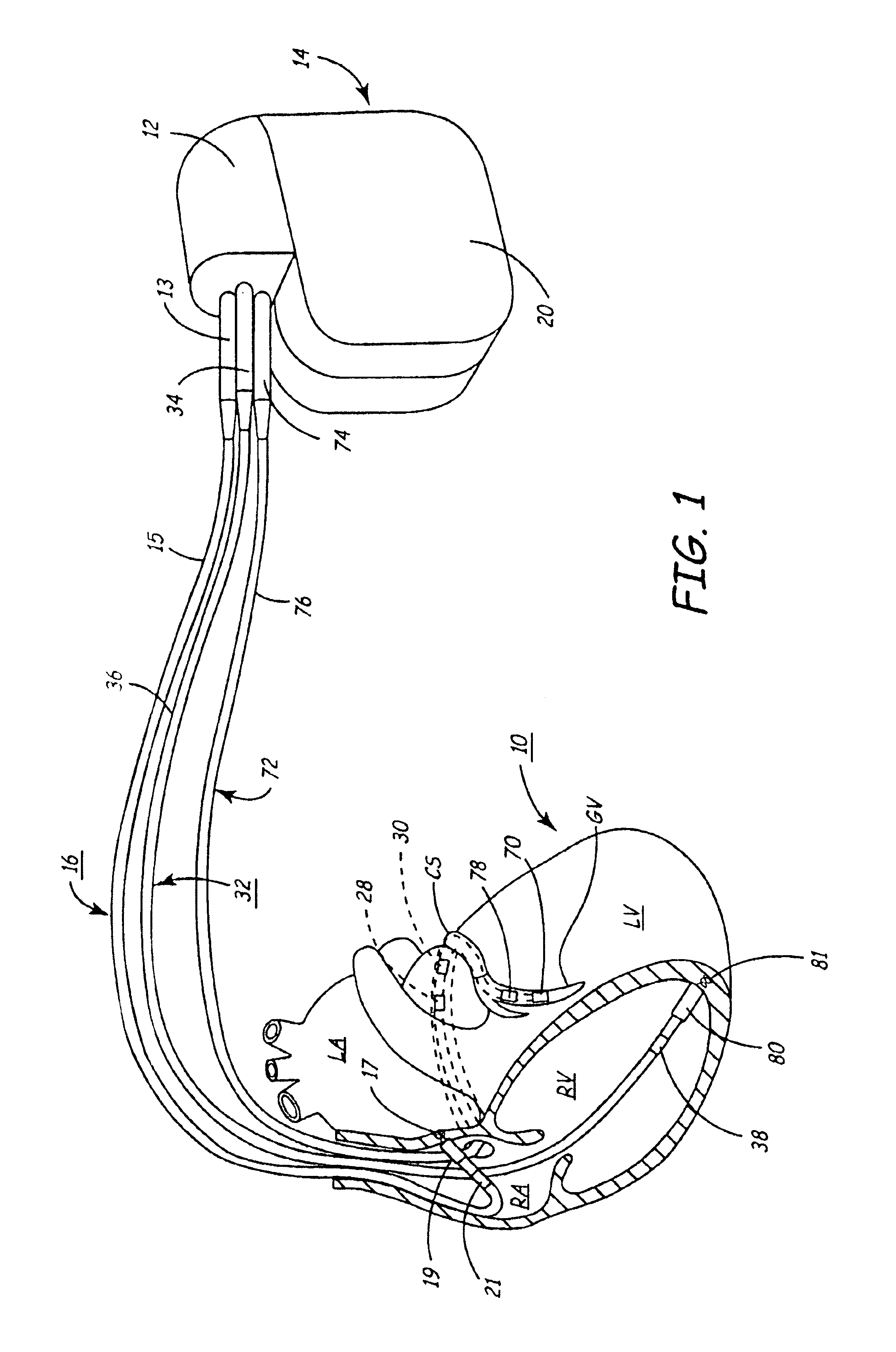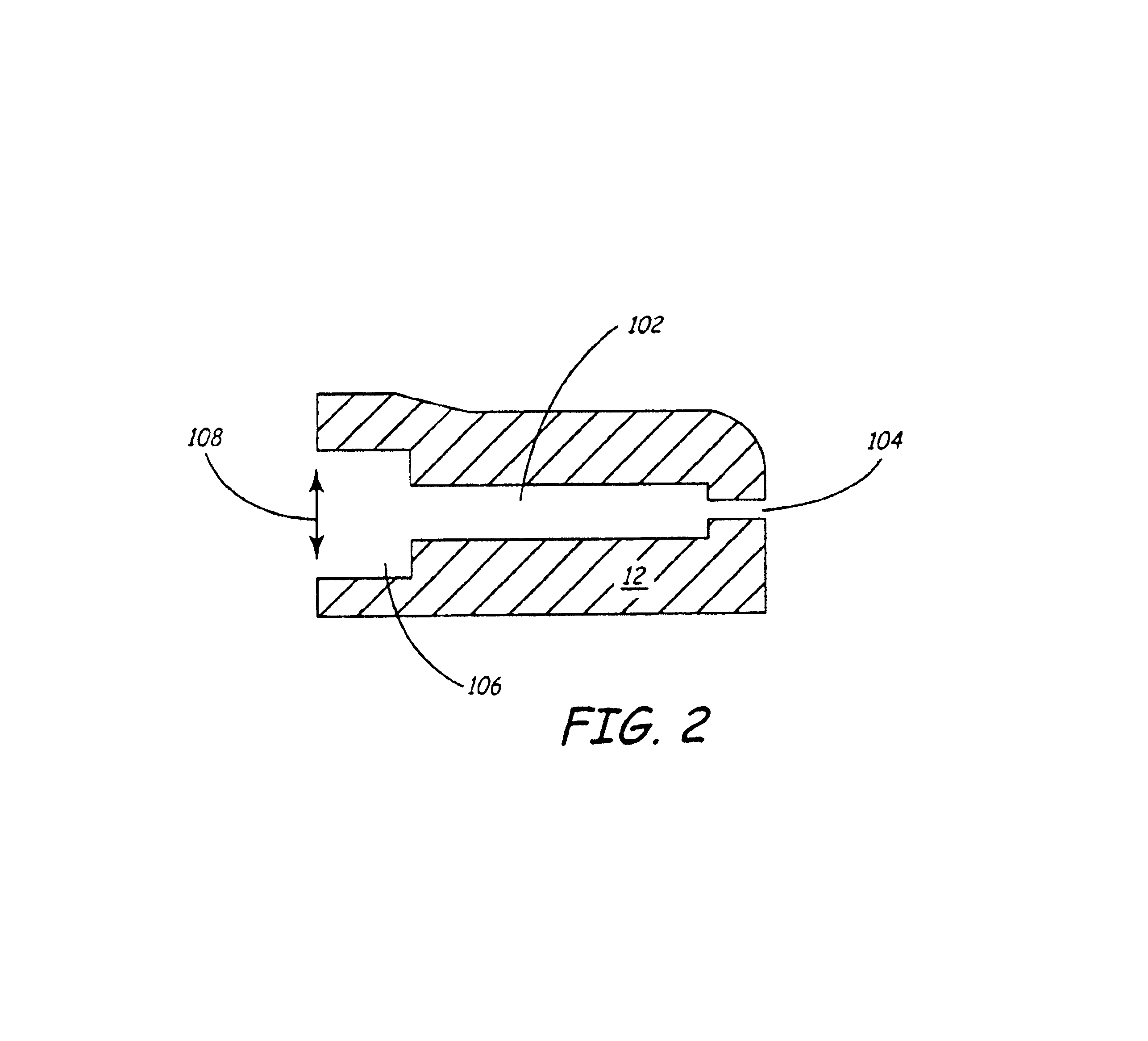Enhanced method and apparatus to identify and connect a small diameter lead with a low profile lead connector
- Summary
- Abstract
- Description
- Claims
- Application Information
AI Technical Summary
Benefits of technology
Problems solved by technology
Method used
Image
Examples
Embodiment Construction
[0024]FIG. 1 is a schematic representation of an implanted, three channel IMD typically used to treat congestive heart failure (CHF). IMD 14 is implanted subcutaneously in a patient's body between the skin and the ribs. Three endocardial leads 16, 32 and 72 connect IMD 14 to right atrium (RA), right ventricle (RV) and left ventricle (LV), respectively, through connector block 12. Any one or more of leads 16, 32, and 72 may be a low profile lead that embodies the characteristics of the present invention, hereinafter described. A remote indifferent electrode may be formed as part of the outer surface of housing 20 of IMD 14 for unipolar pacing.
[0025]The present invention will be described herein as an IMD used to provide therapy for CHF. Those of ordinary skill in the art, however, with the benefit of the present disclosure will appreciate that the present invention may be advantageously practiced in connection with numerous other types of IMDs such as defibrillators, cardioverters, a...
PUM
 Login to View More
Login to View More Abstract
Description
Claims
Application Information
 Login to View More
Login to View More - R&D
- Intellectual Property
- Life Sciences
- Materials
- Tech Scout
- Unparalleled Data Quality
- Higher Quality Content
- 60% Fewer Hallucinations
Browse by: Latest US Patents, China's latest patents, Technical Efficacy Thesaurus, Application Domain, Technology Topic, Popular Technical Reports.
© 2025 PatSnap. All rights reserved.Legal|Privacy policy|Modern Slavery Act Transparency Statement|Sitemap|About US| Contact US: help@patsnap.com



